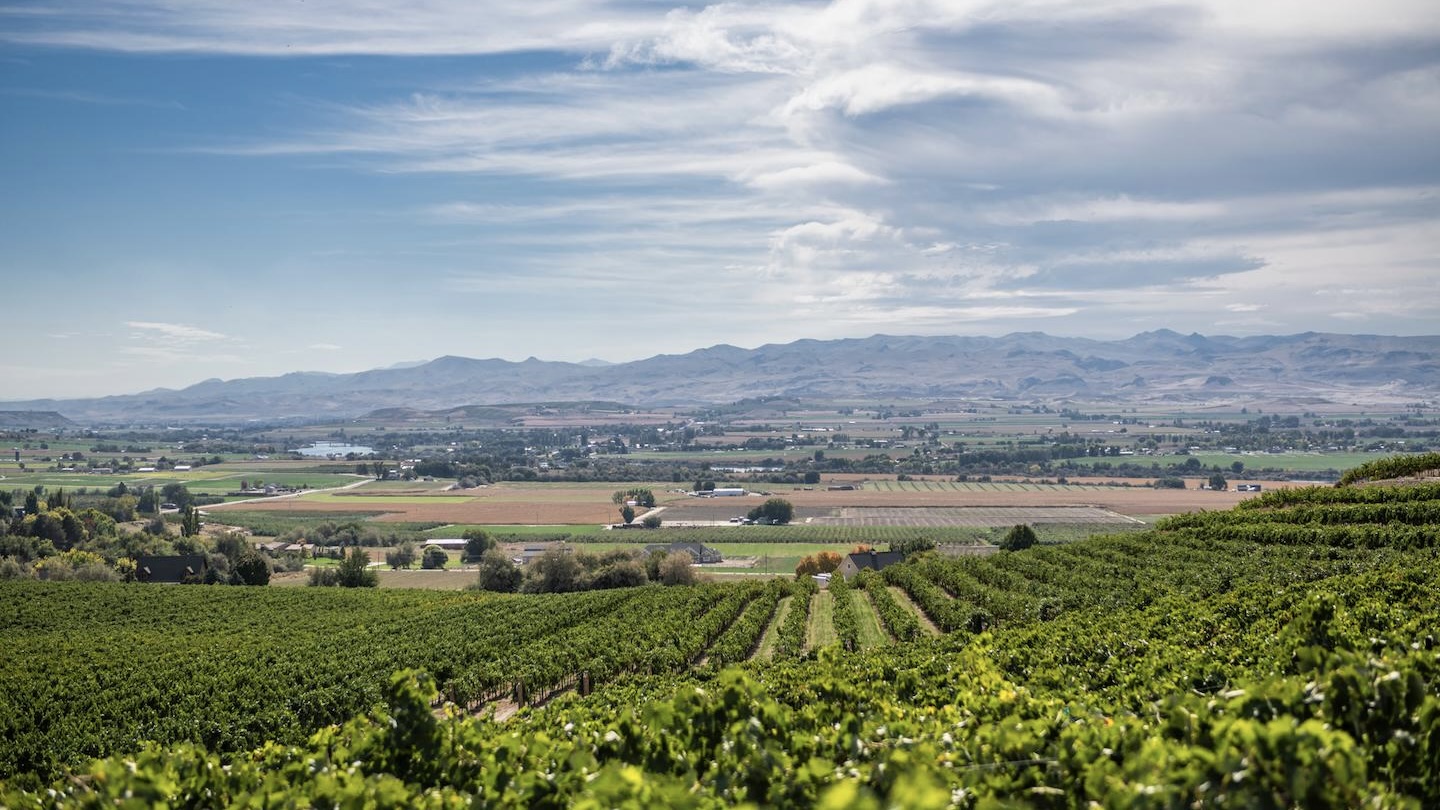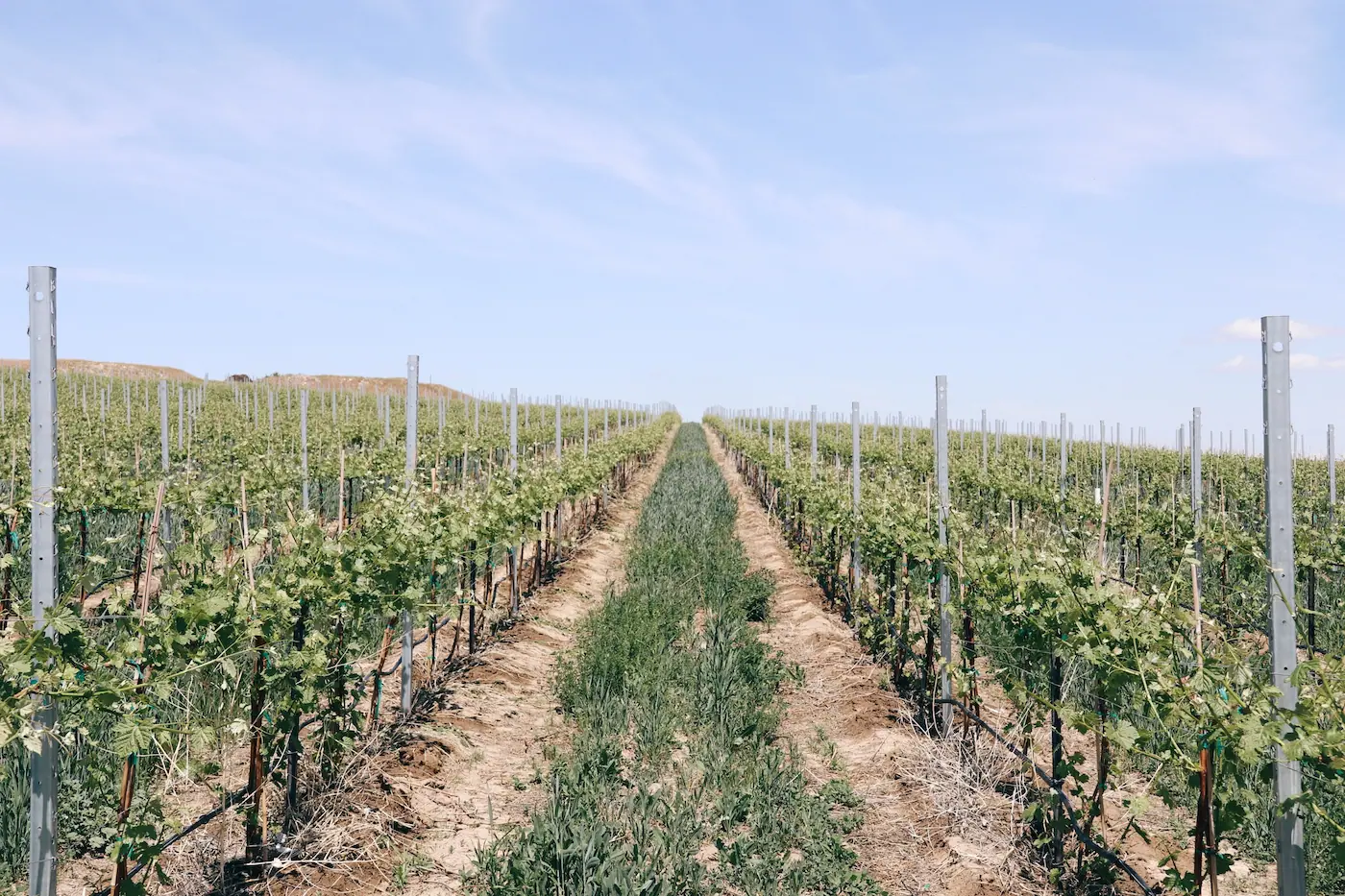Winemaking
Explore Idaho’s wine country through insights from local winemakers on crafting high desert wines.
Dive into the rich tapestry of Idaho winemaking, as explored through the insights of four esteemed winemakers: James Nederend from Koenig Vineyards in Snake River Valley AVA, Sydney Nederend at SCORIA Vineyards, also in Snake River Valley AVA, Melissa Sanborn from Colter’s Creek in the Lewis Clark Valley AVA, and Hailey Minder from 3100 Cellars in Eagle Foothills AVA.
Each winemaker shares their unique experiences with Idaho's diverse terroir, their strategic grape variety selections, and the innovative techniques that define their distinctive wine styles. Discover how the landscape, climate, and visionary winemaking converge to craft the exceptional character of Idaho wines.
Snake River Valley AVA
James Nederend, Koenig Vineyards

How does the unique climate, soil, and geography of Snake River Valley influence the characteristics of your wines?
"Our dry, sandy, and volcanic soils, combined with the extreme High Desert climate, allow us to produce unique wines from own-rooted Vitis vinifera. The cold winters and sandy soil protect against phylloxera, enabling the truest expression of the varieties like Cabernet Sauvignon. Idaho’s short, hot growing seasons followed by cool falls contribute to wines full of body, rich in flavor, and bursting with natural acidity."
What challenges and opportunities does Idaho's climate present in selecting grape varieties?
"Idaho's extreme temperatures necessitate careful water management and selection of hardy varieties that can withstand over 100°F in summer and drops to 0°F in winter. Varieties such as own-rooted vines thrive here, adapting well across climates and reducing cultivation complexity."
How do you balance tradition and innovation in your winemaking?
We aim to showcase the distinct qualities of each grape variety and vintage. Our focus is on achieving specific Brix levels for optimal alcohol content while maintaining a consistent oak program, ensuring each vintage uniquely expresses its characteristics.
Snake River Valley AVA
Sydney Nederend, SCORIA Vineyards

Can you explain how your unique climate, soils, and geography influence the characteristics of your wines?
"Our vineyard's unique volcanic SCORIA rock and windblown sand significantly impact our vines, creating stress that results in wines with deep color and intense flavor. The warm microclimate around our volcanic vent significantly shapes each block of our vineyard, influencing the unique profiles of our wines."
Given the challenges and opportunities presented by Idaho's climate, how do you go about selecting the right grape varieties?
"We carefully select grape varieties such as Petit Verdot, Malbec, and Cabernet Sauvignon suited to our warm and dry microclimate. We consult with local experts and nurseries to ensure our choices align with both our climate and winemaking goals, like our exciting new ventures with Syrah, Mourvèdre, and Grenache."
What is your approach to developing diverse wine styles?
"Our portfolio ranges from single-vineyard Estate wines to traditional blends, using a mix of American and French Oak. We strive to produce unique blends annually, reflecting our innovative winemaking style while maintaining the exceptional quality of our fruit."
Lewis-Clark Valley AVA
Melissa Sanborn, Colter's Creek

How does the geography of Lewis-Clark Valley influence your wine characteristics?
"Colter’s Creek is nestled in two steep, narrow river canyons - the Clearwater River and the Potlatch River. These steep slopes allow air to flow up and down the slopes, preventing stagnant air from pooling in the vines. This helps protect the vines from frost damage during the cooler fall and winter months. This also aids in air movement in the summer, where warm air tends to blow through the canyon in the afternoon, creating cool evenings that help retain acids in the grapes. In the mornings, the warm air blows back in, driving growth and later berry ripening.
The valley lives in what is considered the Banana Belt of Idaho. Paired with its low elevation (below 1000 feet), the climate tends to be more mild in the winter and warmer in the summer, compared to the rest of the state. This aids in vine protection during cold snaps and makes for a long growing season as the first fall frost of the season is late and the last spring frost is quite early in the year."
Given the challenges and opportunities presented by Lewis-Clark’s climate, how do you go about selecting the right grape varieties?
"Trial and error has been the best route for determining the success of cultivars in the vineyards. We have found that varieties that grow well in the Walla Walla region typically do well in the LC Valley. We have had great success with Syrah, Mourvèdre, Bordeaux varietals, Tempranillo, and lesser known types such as Negroamaro, Graciano, and Sagrantino. Climate change is definitely affecting what does well. As the summers get warmer, varieties that used to do great (Riesling, Merlot, Viognier) are struggling a bit with the earlier harvest dates. We continue to change trellis applications and canopy management practices to cope with climate change."
Lewis-Clark Valley offers a diverse range of wine styles. Could you share your approach to exploring and developing different styles of wine?
"We tend to drink wine from around the world. I probably drink less domestic wine than I should, but I find domestic varieties limiting, at least in the past. Over the years, we have experimented with a diverse range of cultivars to keep things interesting. Customers enjoy sampling grapes they have never tried before, and, when they learn we grew them in the LCV, they get excited.
Most of our innovation is in the vineyard. Being an estate winery, we can do most of our experimenting in the vines, with varietals, with how we grow the grapes, with when we harvest the berries. We did more experimenting in the winery in the past but, as our grapes mature, we find using a minimalist approach in the winery, along with a mix of subtle oak and concrete vessels, allows the truest expression of the grape and the vintage. Showing the change in grape from year to year is the most exciting part of releasing wines."
Eagle Foothills AVA
Hailey Minder, 3100 Cellars

Can you explain how your unique climate, soils, and geography influence the characteristics of your wines? How do these factors contribute to the flavor profile, acidity, or texture of your wines? How is Eagle Foothills different from the surrounding Snake River Valley?
"At 3100 Cellars, since we are making sparkling wine, we like to look for grapes that retain their acidity and might be growing in a cooler site than some of our more popular vineyard destinations in Idaho. When our family found a 10 acre parcel in the Eagle Foothills, it was just before the Eagle Foothills AVA had been established but we knew that the rolling hills that have consistent breezes and air drainage were going to be a nice spot for an estate vineyard.
Our spot is typically a little cooler than some of our other vineyard sources. When we get weather systems that move in, they can be toned down just a bit in the Eagle Foothills region because they are in a slight “eddy” up in the hills instead of along the floor of the valley where the weather tends to roll through. All this helps us to retain acidity in our fruit, which is a key component of making sparkling wines. The slightly gentler weather also allows us to focus on getting the vines woken up slowly in the spring and not having to worry too much about the impact of weather on the fruit for our early season picks."
What criteria guide your selection of grape varieties for sparkling wine?
"One of our winemaking tenets is to make great sparkling wine out of grapes that grow well in our region. When we decided to start making bubbly in Idaho, we of course looked at the great sparkling wines of the world, and especially the traditional method used to make wine in Champagne, and wondered how we could make world class sparkling wines right here at home.
If you haven’t visited the Eagle Foothills region, or the Boise area, you might not know that it is quite a different environment from the Champagne region. We are in a high desert arid region. Because we are a small winemaking region, we don’t tend to have a lot of “rules” and preconceived notions in our winemaking circles. So as we thought about making world class sparkling wines here, we decided to focus on using varieties that grow exceptionally well in the area, and of course have good flavor profiles for bubbles and retain their acidity well.
Chardonnay is one of the three main varieties grown in Champagne, and it grows well in many conditions/climates. I think Chardonnay gets a bad rap as a boring wine grape, but we love working with different Chardonnay clones and vineyard sites in our area! We also work with Gewürztraminer, Syrah (rosé), Malbec (rosé), Mourvèdre (rosé), and have a few other varieties we are hoping to work with in the future."